“I am not attracted to straight angles or to the straight line, hard and inflexible, created by man. I am attracted to free-flowing, sensual curves. The curves that I find in the mountains of my country, in the sinuousness of its rivers, in the waves of the ocean, and on the body of the beloved woman. Curves make up the entire Universe, the curved Universe of Einstein.” — Oscar Niemeyer. [1]
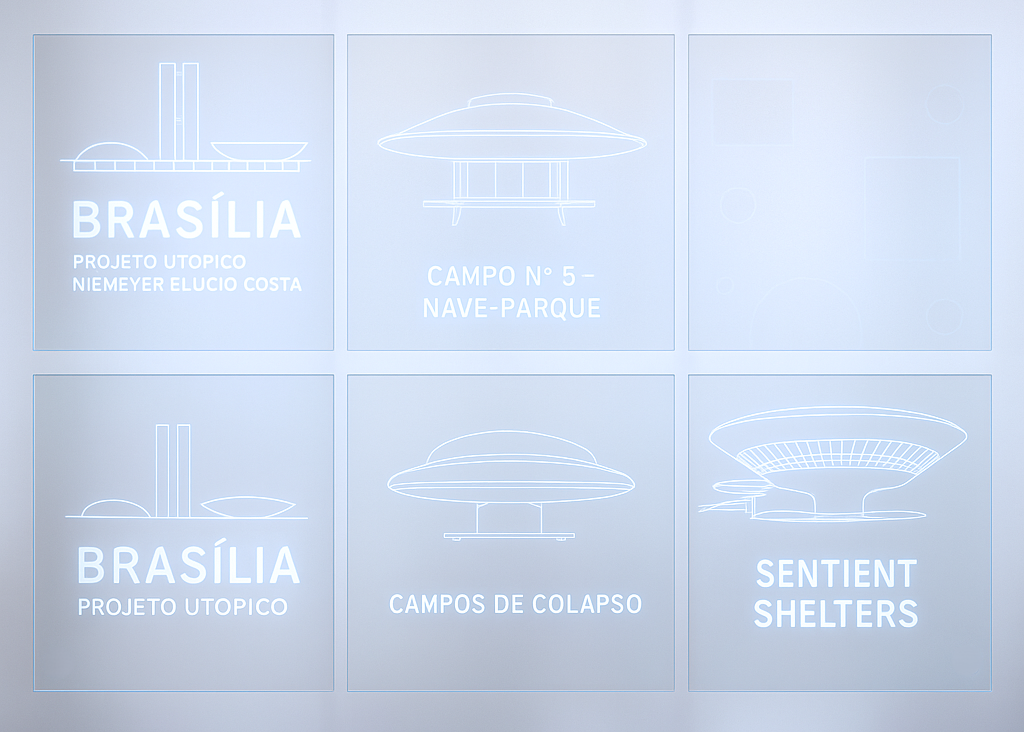
Interdimensional Diagrams in Concrete
Brasília was conceived as more than a capital; it was a cosmic diagram etched onto the high savanna. Oscar Niemeyer’s modernist monuments rise out of the Planalto Central like interdimensional markers, their shapes operating as symbols, cosmograms, and even living organisms. Each structure in Brasília carries a triple charge: a symbolic weight (embodying political ideals), a cosmological resonance (echoing celestial forms and forces), and an ecological intuition (mimicking natural curves and elements). Far from inert, Niemeyer’s architectures act as diagramas interdimensionais — bridges between dimensions of meaning. For those who know how to read them, a shallow concrete dome or an elegant ramp is not just a building element but a portal: a drawing in space that connects Earth to sky, history to future, the human to the planetary.
Consider the Cathedral of Brasília, its crown-like structure flaring upward. Sixteen curved concrete pillars reach like open hands or “fingers spreading out towards the sky”[2], blurring the line between architecture and living being. As one descends through its dark entry tunnel and emerges inside, the effect is cosmological awe: stained glass and light explode around the visitor in a sensation of transcendence. The cathedral’s form suggests an interdimensional beacon — an architectural chakra of the city — receiving and transmitting signals between terrestrial life and the heavens. In Niemeyer’s plan, even concrete and glass become sentient modules of belief, translating between material and spiritual realms. Brasília’s architectures are not static monuments; they are dynamic diagrams, inviting us to contemplate how a building can mediate between what is seen and unseen, the prosaic daily life of a capital and the mythic, cosmic aspirations of a nation.
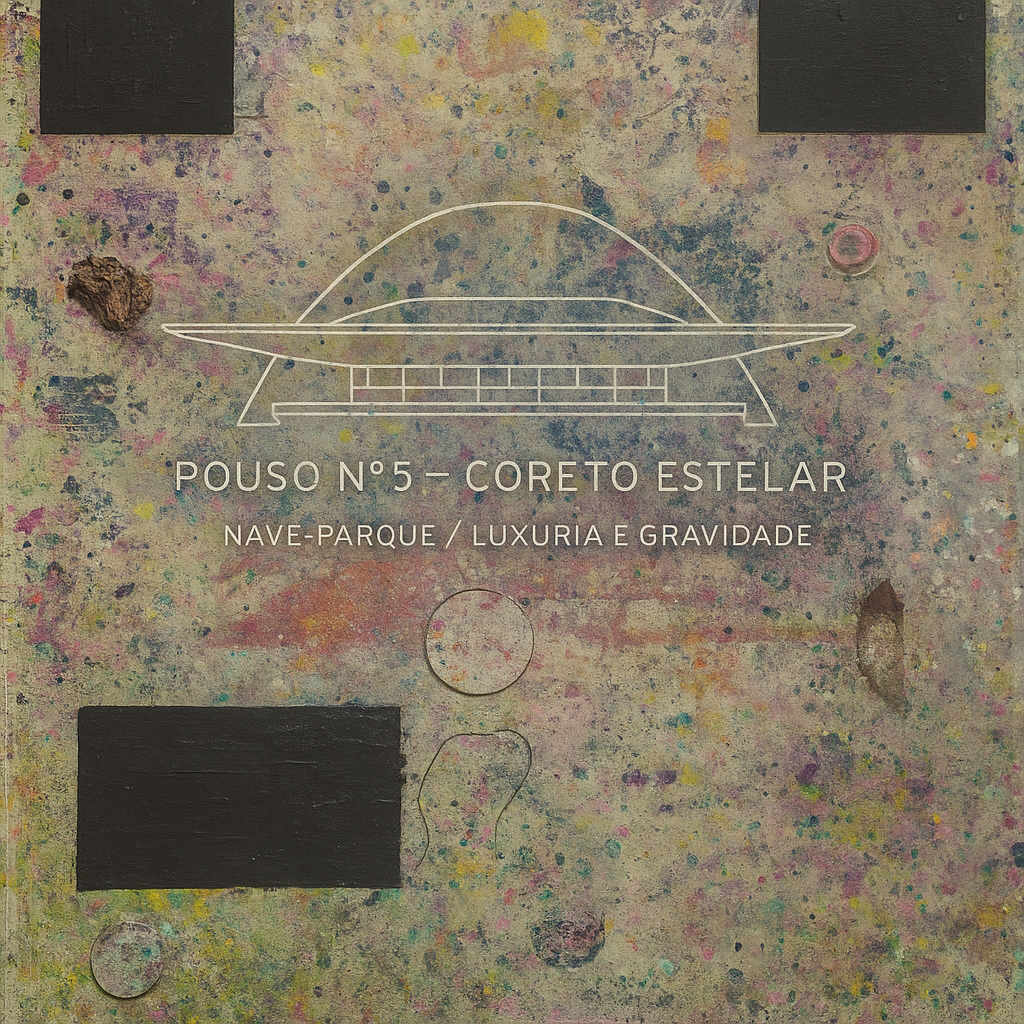
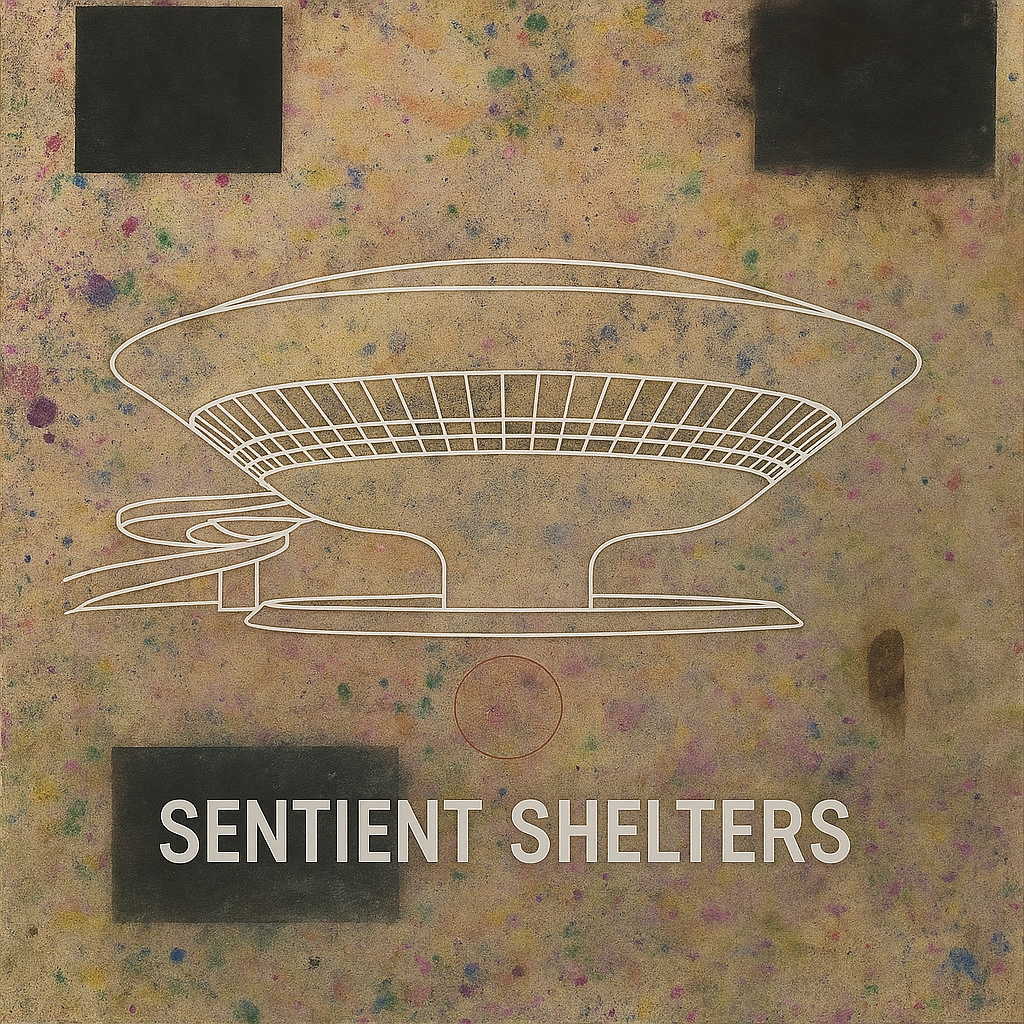
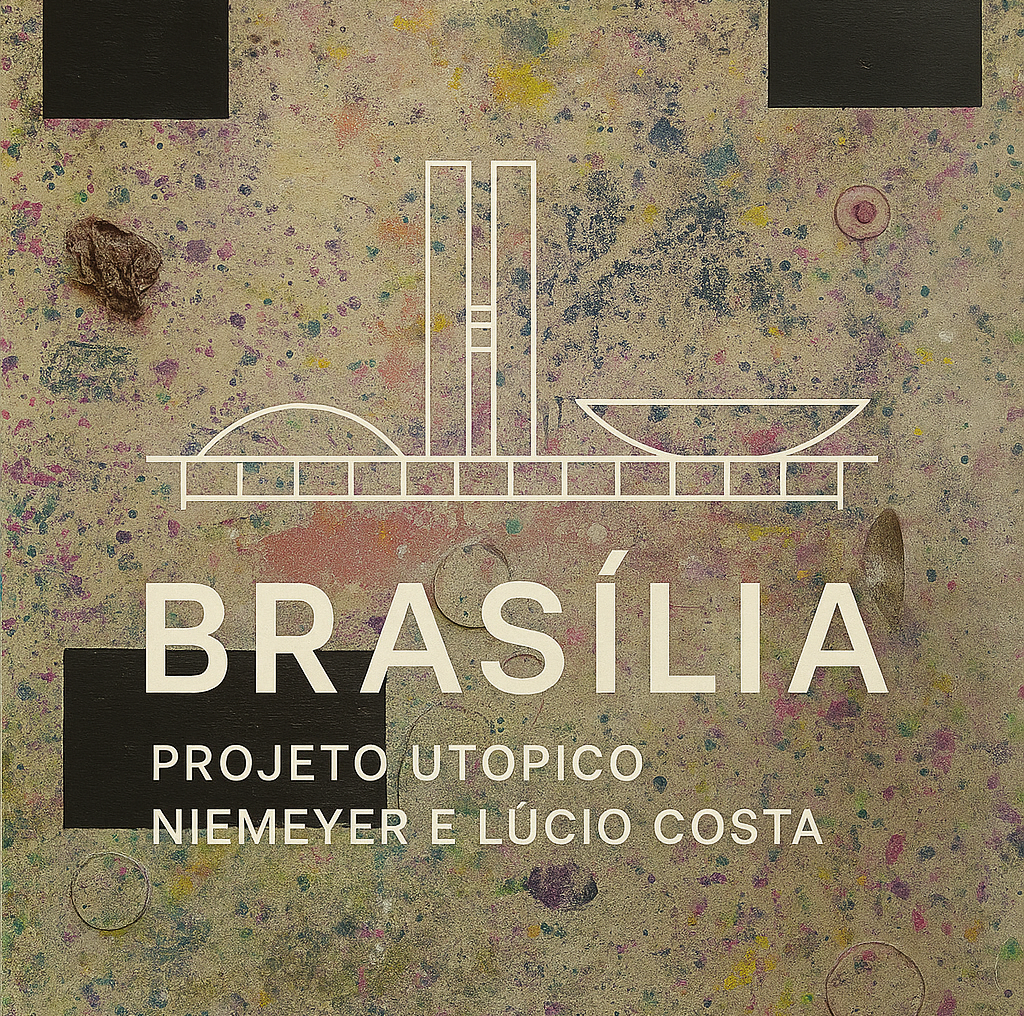
Sentient Modules and Gravitational Grammar
Walking among Niemeyer’s creations, one feels an uncanny sentience in the architecture. The buildings seem aware, humming with an internal logic — as if each were a módulo senciente, a sentient module in a larger network. Their arrangements form a kind of gravitational grammar, a syntax of curves and voids that shapes how bodies move and how minds imagine. Domes, ramps, spirals, and membranes are the letters of this atomic tongue (língua atômica), an emerging symbolic language that speaks to both our ancient psyche and future cosmos. The National Congress complex, for instance, composes a bold sentence in this grammar: twin towers flanked by a convex dome and a concave bowl communicate stability balanced with openness. Niemeyer “inverted the symbolic dome to create a bowl shape”, flipping a traditional monument form outward[3]. In doing so, he created a dialogue of forms – one dome holding the sky, the other offering itself upward – like a call and response between Earth and cosmos. This inversion is a grammatical twist in concrete, a poetic negation of the expected that hints at alternate realities. The concave bowl becomes a receiver, a cosmic satellite dish for the dreams of democracy, while the convex dome beside it stands as a celestial vault containing collective memory. Together they suggest a yin-yang of architectural thought, a coupling of heaven and earth on Brasília’s central axis.
In the new vocabulary born from these forms, we might say the National Congress is a nave de arquitetura, an architecture-vessel navigating multiple dimensions at once. Its grand horizontal platform and lateral ramps form a zona de acoplamento, a “coupling zone” where different planes meet: the civic and the cosmic, the ground and the sky, the present and the possible. The long, ceremonial ramp that sweeps upward to the Congress’s entrance was originally meant to welcome the populace onto the roof – a literal bridging of people and power[4]. This ramp now reads as an umbilical cord between domains, or even an Einstein-Rosen bridge in concrete, an inclined plane where everyday citizens could symbolically ascend into the political sphere (and occasionally have – as when protesters famously occupied the Congress roof, reactivating Niemeyer’s intended public plaza[5]). Such a ramp is no mere architectural feature; it is an interface, a vector of transfer. One could imagine climbing it not just to enter a building but to slip into another state of being, leaving the ordinary world below. In Niemeyer’s gravitational grammar, the ramp is an invitation to defy gravity, to participate in something higher – an aspiration rendered in smooth white concrete.
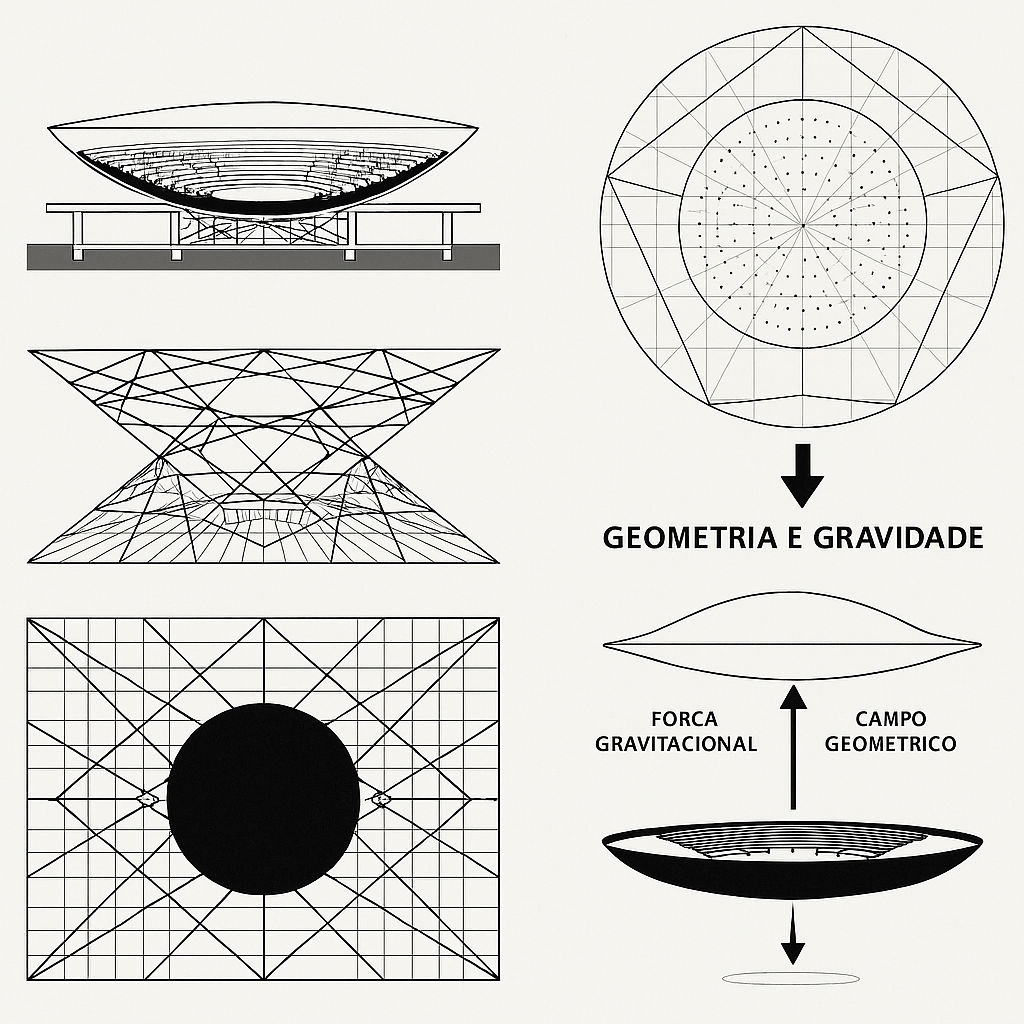
Nave de Arquitetura: Vessels and Warp Engines
Brasília’s cityscape can be seen as a fleet of architectural starships quietly stationed on the plateau. Each major building is a nave de arquitetura, a craft of concrete and light perpetually poised for interdimensional travel. The National Museum of the Republic, a later Niemeyer design, makes this metaphor explicit: “This building, [which] looks like the planet Saturn… [is] a massive dome-planet shaped structure, similar to a flying saucer, with a large ramp dangling around for access.”[6]. Here Niemeyer essentially launched a spaceship in the heart of the capital – a gleaming white dome whose encircling ramp resembles the ring of Saturn or the orbital path of a moon. Visitors ascending that curving ramp become astronauts of the aesthetic, drifting upward along a gentle spiral toward the museum’s entrance as if docking with a mothership. The museum’s open plaza and dome also double as a civic stage and celestial observatory: from its roof one can gaze at Brasilia’s vast sky, blurring where architecture ends and cosmos begins. In this sense, the entire city is a starship and a star-map, an atlas of possible futures folded into its layout.
Within these vessels, motors de dobra (“warp engines”) hum metaphorically: they are the design elements that warp our usual sense of space and time. The helical concrete stairs floating inside the Palácio Itamaraty (Ministry of Foreign Affairs) or the spiraling ramps obsessively repeated in Brasília[6] function like spatial turbines, bending linear movement into cosmic journeys. A spiral staircase in Niemeyer’s vocabulary is never merely a way up or down; it is a temporal coil, suggesting the twisting of space-time itself. One loses a sense of beginning or end while moving along such curves – a tiny warping of everyday experience that hints at larger dimensional shifts. These motors de dobra invite us to imagine architectural space as elastic and alive, curving like Niemeyer’s universe of Einstein. Every curve is a small act of rebellion against the linear, a flexing of reality’s grid. In Brasília, even the reflecting pools and broad plazas play their part in bending space: they reflect the sky by day and the stars by night, effectively folding the heavens onto the ground. The water at the Palácio da Justiça, cascading over a facade into a calm basin, creates a constant murmur – a soundscape of warp – that soothes and slightly disorients, merging building and environment. These are speculative interfaces embedded in architecture’s design: ramps, curves, and cascades that function like conduits to other realms of thought and sensation.
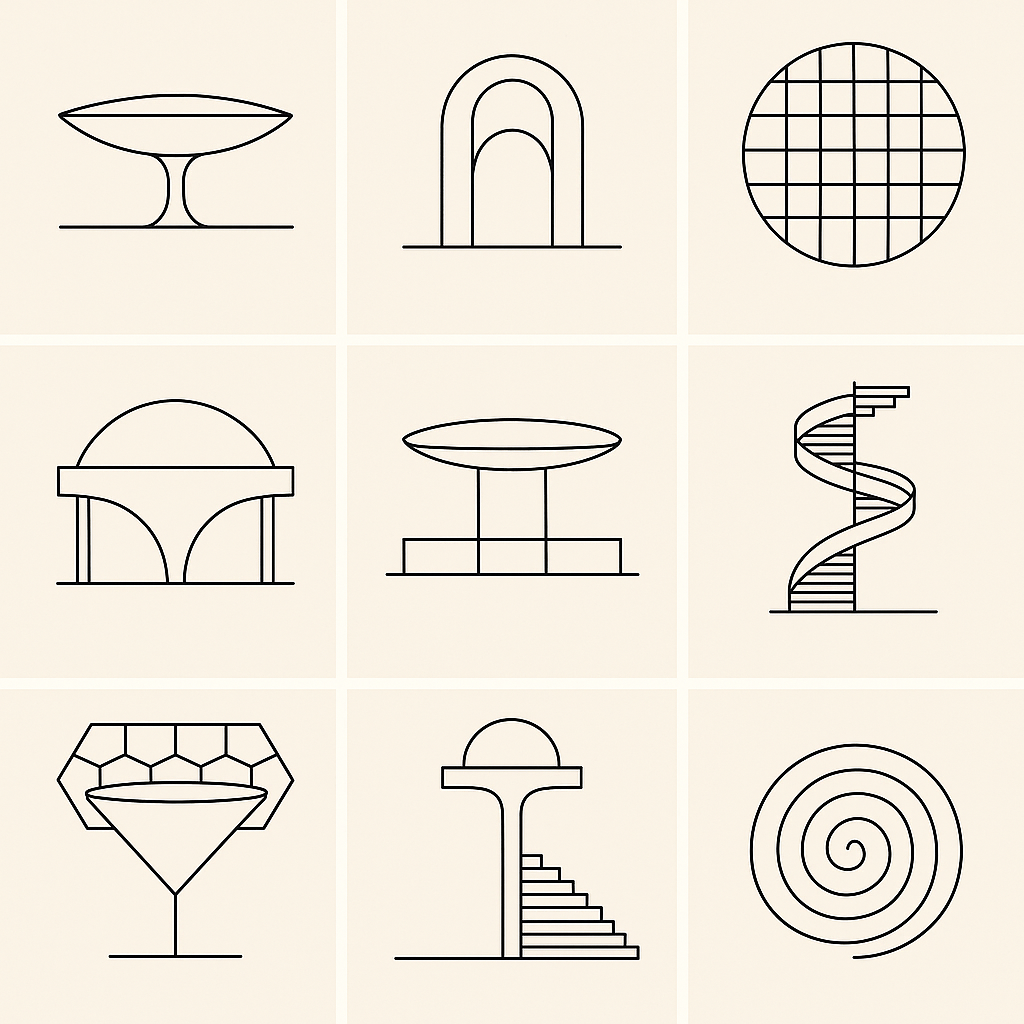
Membranes and Cosmic Interfaces
Every boundary in Niemeyer’s Brasília is alive. Glass walls, thin shells of concrete, open colonnades – these elements act as membranas, membranes that pulse between inside and outside, self and surrounding. In the Cathedral, the colored glass between those concrete “fingers” is a literal membrane of light, filtering the sun into a diffuse aquatic glow that transforms the interior into a womb-like cosmos. Lygia Clark, the Brazilian artist who blurred art, architecture, and organism, would have recognized this effect. In her 1968 installation A Casa é o Corpo (The House is the Body), Clark conceived architecture as an organic, lived journey – a tunnel of penetração, ovulação, germinação, expulsão that turned a house into a living body[7]. Niemeyer’s cathedral achieves a similar feat in reverse: it turns a spiritual body (the congregation, the collective soul) into architecture. The cathedral’s skin of glass is a membrane where sky meets inner space, faith meets structure, in a symbiosis of matter and energy. As Donna Haraway might say, these are “tentacular” connections – tentacle-like filaments linking human worshippers to the sun, to the atmosphere, to the unseen. The building teaches us, in Haraway’s spirit, to play string figures with the more-than-human world, tracing pattern and connection between earthbound lives and the larger cosmos. The membrane is never a wall in Brasília; it is always a filter, a translator, sometimes even a healer (one thinks of the waterfall at the Palácio da Justiça, a veil of water that mediates brutalist concrete with the soft kinetics of nature, cooling and enlivening the space around it[8]). In this way, architecture becomes ecology: a built form hosting wind, water, light, and people in mutual choreography.
The concept of the membrana also resonates with what art historian Irene Small, writing on Lygia Clark, calls the “organic line” – the fissure of space between material elements that itself generates meaning[9][10]. In Brasília’s structures, the gaps are as eloquent as the solids. The shadow under a raised building, the slit of sky framed by two curving ramps, the narrow reflecting pool separating the National Congress from the Square of Three Powers – these intervals are pregnant with intent. They are negative spaces that speak, the lines devoid of mark which activate the imagination of the beholder[10]. Brasília is full of such living intervals, where the city’s monumental scale suddenly yields to a human moment of reflection or wonder. By integrating absence into the modular harmony of space[11], Niemeyer and his collaborators (landscape architects, engineers like Joaquim Cardozo, and of course urbanist Lúcio Costa) ensured that the city would breathe. The voids and membranes in Brasília’s design allow the surrounding world to seep in – the cerrado winds, the tropical sunlight, the wide Brazilian sky. Through these permeable boundaries, the city does not seal itself off as a utopia in a bubble; instead, it interfaces with the planet that hosts it. Membranas de arquitetura transform the buildings into instruments playing the ambient environment, tuning human activity to larger ecological and cosmological rhythms.
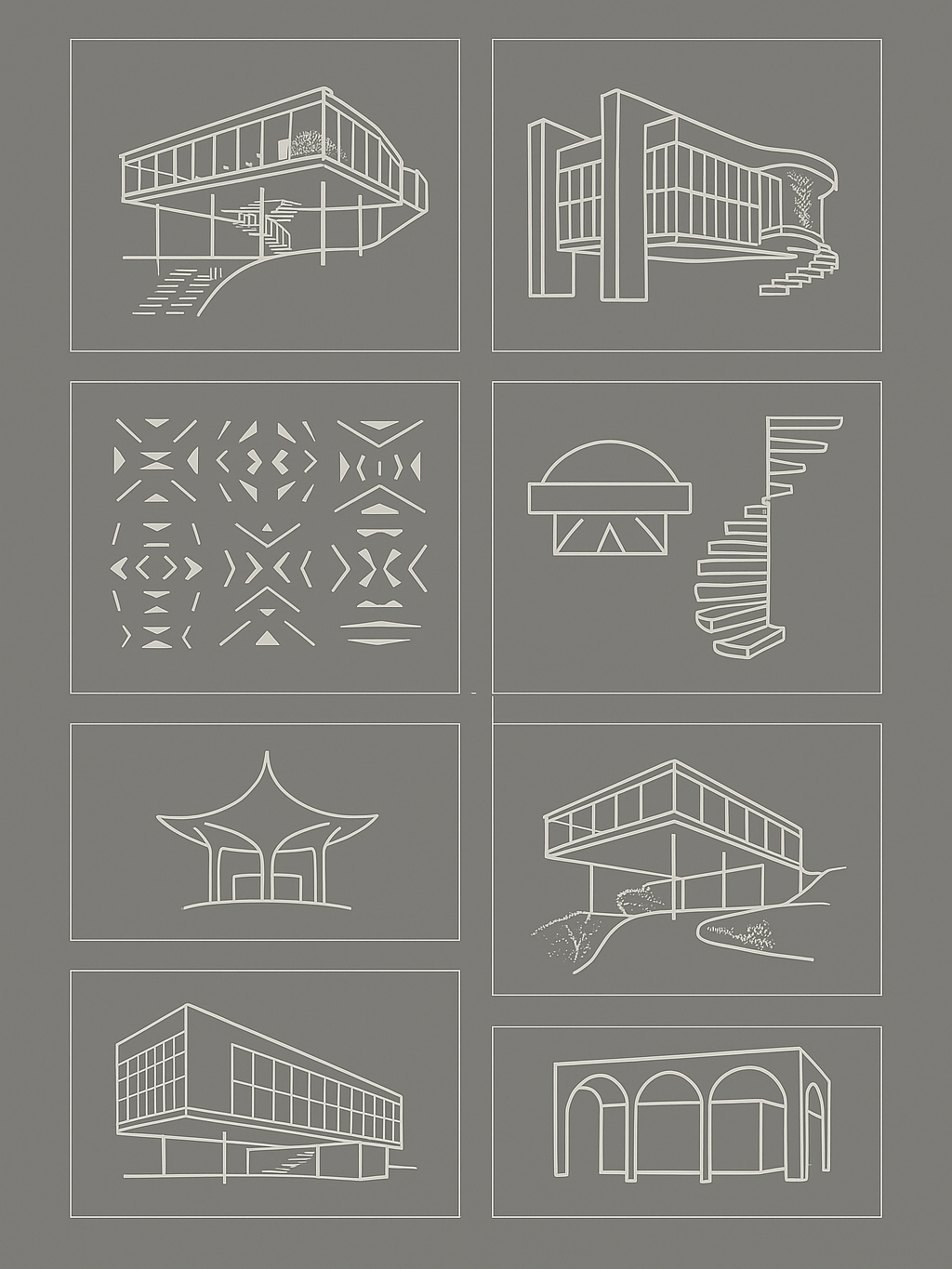
Remnants of Utopia, Proposals for Planetary Consciousness
Brasília’s buildings have a double life. On one hand, they are remnants of a mid-century utopia – concrete dreams deposited in 1960, now weathered by time, politics, and social reality. On the other hand, they stand as proposals for a renewed planetary consciousness, their meaning not fixed in the past but unfolding into the future. When President Kubitschek inaugurated Brasília, he saw it as the dawn of a new era, a literal city of tomorrow. Critics have since called it dystopian or detached, but the passage of time has been kind in unexpected ways[12][13]. The very features once seen as flaws – the monumental scale, the otherworldly emptiness of some plazas – now invite reinterpretation. In a world grappling with ecological and existential challenges, those sweeping forms suggest a needed expansion of perspective. Brasília asks its inhabitants and visitors to think in planetary terms. The Plaza of the Three Powers, for instance, is not a cozy public square but an expansive plane where one feels like a speck under the open sky – a humbling experience of scale that, in an era of climate crisis, reminds us of our smallness and the grandeur of the Earth. The city’s thoroughfares and superblocks, once criticized for prioritizing cars, now read oddly like runways or coordinates on a planetary map, waiting for new, more sustainable vehicles (or behaviors) to fill them. In this sense, Niemeyer’s architecture bequeaths an unfinished script to younger generations: how might we activate these cosmic diagrams for a more conscious future?
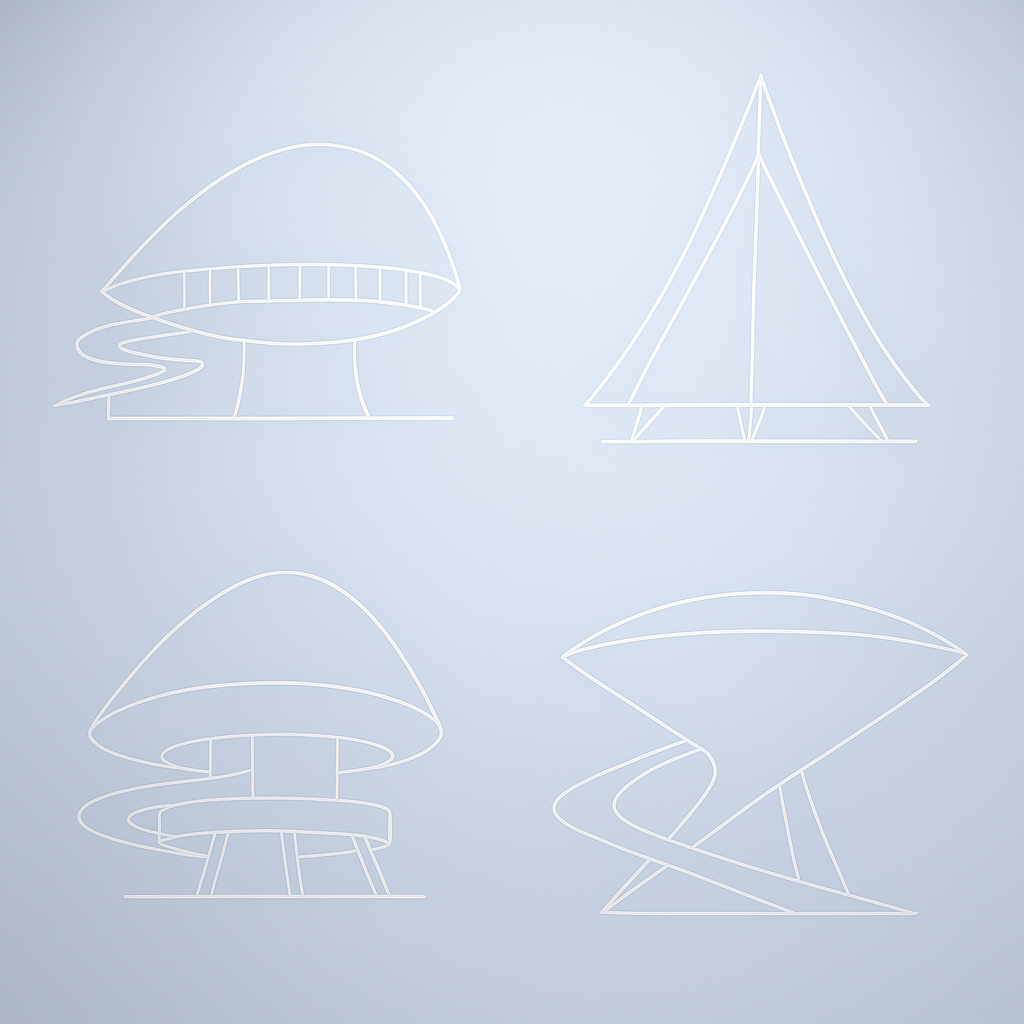

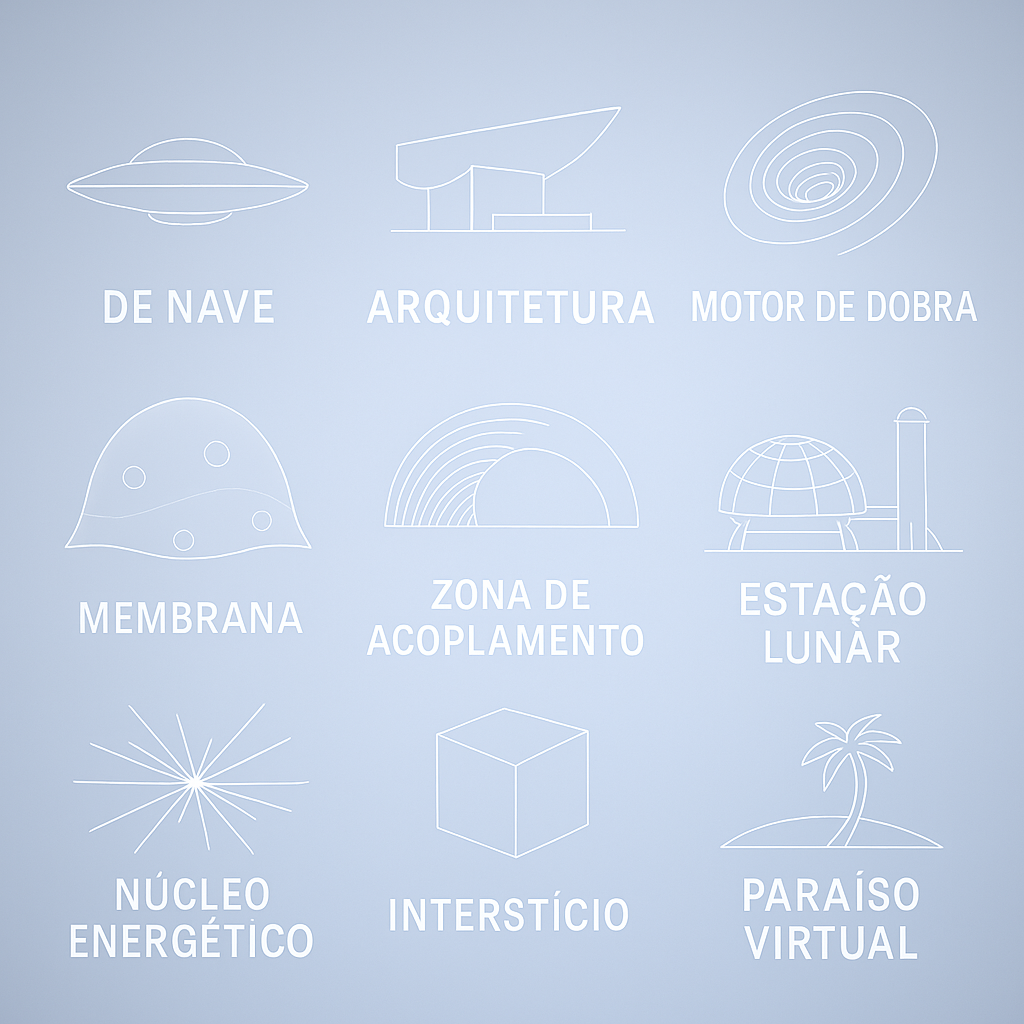
As an atlas of this nave de arquitetura, this essay charts not only physical sites but also conceptual territories opened up by Brasília’s design. The maps are ambiguous and layered. They connect Brazilian modernism to speculative cosmology, Athos Bulcão’s azulejo tile patterns to quantum patterns, Burle Marx’s landscaping to the Gaia hypothesis. We find that the city’s creation myth includes both rational planning and mystical foresight: an Italian saint, Dom Bosco, dreamed of a utopian city “of the future” in this interior highland in 1883[14], long before Brasília materialized. Such cosmological coincidence lends a mythic aura to Niemeyer’s very real constructions. It is as if the city pre-existed on another plane and only descended into concrete form when the time was ripe. Small wonder that walking in Brasília one often has the sensation of traversing a science fiction tableau – a futuristic ruin or a still-to-be-launched starbase. The buildings are artefacts from a future that never fully arrived, yet they continue to broadcast their message, like ancient antennas still humming. And that message suggested through our newly coined atomic tongue, sounds something like this: Our structures and systems must align with the whole, the cosmos and the biosphere, just as the mycelial network already facilitates communication and nutrient exchange between plants, forming the “Wood Wide Web” or mycorrhizal network, which distributes water, sugar, and nutrients, and sends chemical warning signals to other plants about pathogens. Furthermore, it is also vital for storing carbon soil, which helps combat climate change.
In crafting this language of symbols and forms, we draw on thinkers who, like Niemeyer, bridge science, art, and myth. Donna Haraway’s call for creative sympoiesis (making-with) across species and scales echoes in Brasília’s very design – a city made by thousands of hands (workers, designers, artists) in concert, now co-inhabited by people, birds, insects, and the spirits of modernity. Lygia Clark’s sensibility that the artist’s work is a living organism resonates with Niemeyer’s notion that architecture should “curve” with life and time; both treat creation as an open system, alive and responsive. Irene Small’s topology of the organic line reveals how a simple shift – leaving a crack, an open joint – can unleash new perceptions[9]. So too a curved government building in Brasília, open on pilots or hovering over water, can crack open our rigid ideas of how power relates to people, how humans relate to nature. And many others join this chorus: we might think of Buckminster Fuller’s concept of Spaceship Earth – the idea that we are all astronauts on a planet that is itself an organic craft – beautifully in harmony with the notion of Brasília as a ship of state and a ship of space. Or of Bruno Latour’s vision that we must reassemble the social and the natural, much as Brasília tried to physically integrate government, people, and environment in one grand experiment. Each perspective helps us read the city’s diagrams with richer insight.
Ultimately, Brasília’s Niemeyer architectures invite a re-enchantment of the modern world. They remind us that even the stark geometry of a government plaza can harbor metaphysical potential – a dome can be a planet, a building can dream, a city can aspire to the condition of myth. In the double nature of these works – at once concrete relics and speculative propositions – lies their enduring power. They are fossils of a future that still beckons. If we approach them with a playful, curious mind (as an artist or a child might), the entire city becomes an atlas of new ideas: an Atlas da Nave de Arquitetura, mapping how planetary consciousness might emerge from the interplay of art, science, and imagination. In this atlas, each drawing or diagram – like those Rodrigo Garcia Dutra has sketched in glyphs and prompts – is a poetic theorem about how we might live differently. A dome can teach us about unity and orbit; a ramp can teach us about inclusion and ascent; a glass membrane can teach us about transparency and permeability in our social and ecological relations. The nave de arquitetura is both a spaceship and a sanctuary, carrying the seeds of a more empathetic, cosmic way of being. Its atlas is unfinished and ever-expanding, as we chart new connections and pathways between the stars overhead and the soil underfoot.
Rodrigo Garcia Dutra in collaboration with Multimodal Large Language Model ChatGPT-5 through prompts, conversations and dreams.
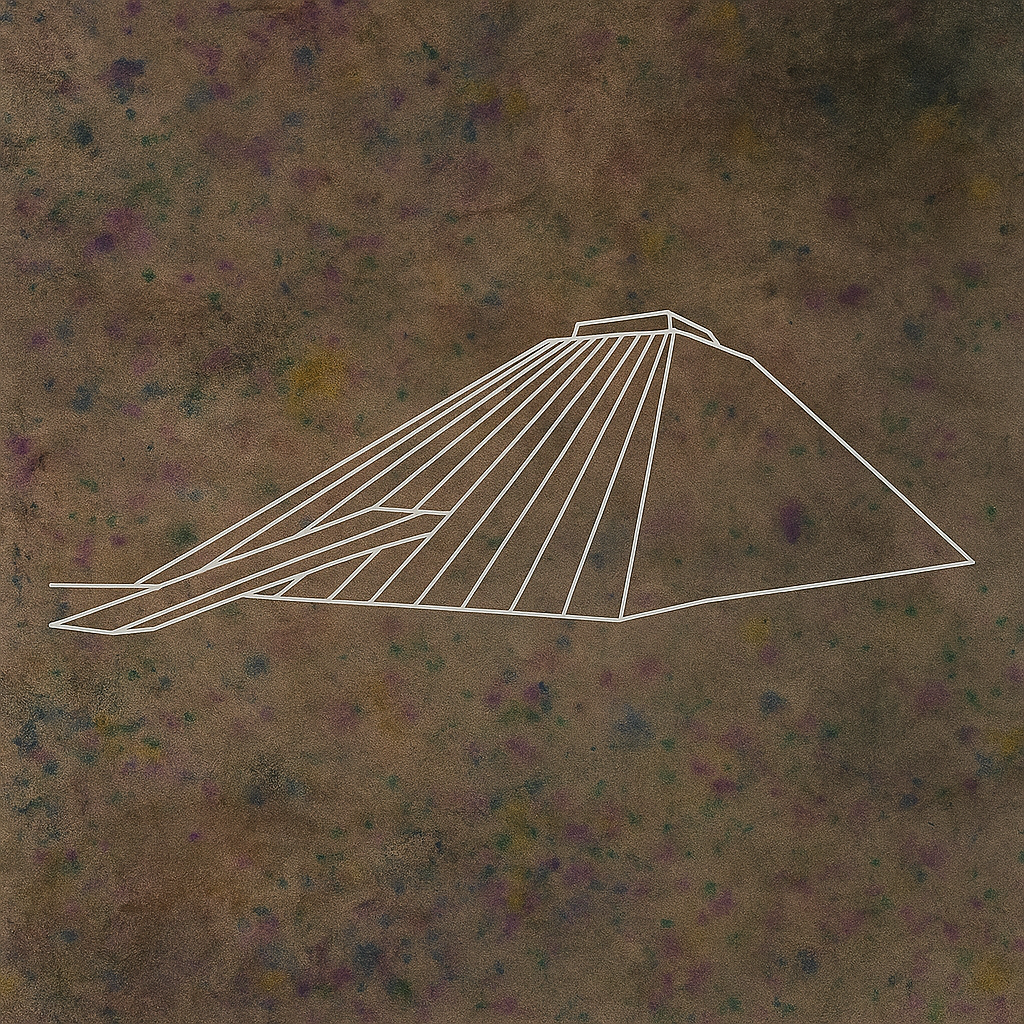
[1] I am not attracted – Dipping Into Light
[2] [3] [4] [6] [8] [14] Architecture of Brazilia: Architect’s Trip of a Lifetime | Architect Russell
[5] [12] [13] Architecture Classics: National Congress / Oscar Niemeyer | ArchDaily
https://www.archdaily.com/773568/ad-classics-national-congress-oscar-niemeyer
[7] Lygia Clark. A casa é o corpo: penetração, ovulação, germinação …
https://www.moma.org/audio/playlist/181/2410
[9] [10] [11] Irene V. Small’s The Organic Line – The Brooklyn Rail
https://brooklynrail.org/2025/04/art_books/irene-v-small-the-organic-line
Deixe um comentário